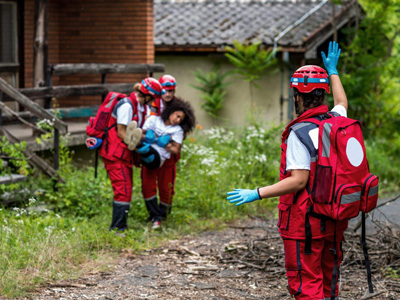 |
CERT Unit 3 and 4: Disaster Medical Operations |
1.50 |
This course covers life-saving measures CERT volunteers can take when responding to an emergency scene, such as; controlling bleeding and using direct pressure or a tourniquet, maintaining normal body temperature, opening an airway, and positioning a victim correctly. |
 |
Excellence in Service - Advanced: Service Teams |
1.50 |
This course will cover how to implement proper training and empower employees and motivate employees and reinforce desirable behavior in them. You will also learn how to build customer service teams and select the right employees and conduct an interview. |
 |
Excellence in Service - Advanced: Customer Loyalty |
1.00 |
This course will focus on how to create customer loyalty through dedicated employees and identify the fundamentals of customer loyalty. You will also learn how to understand your customers and make service memorable. |
 |
Grammar Skills: The Importance of Grammar |
1.00 |
This course will cover how to define grammar and discuss its importance. You will also learn how to identify and correctly use different forms of nouns and verbs. |
 |
Grammar Skills: Pronouns, Adjectives, and Adverbs |
1.00 |
This course covers how to define pronouns and use them to reduce repetitive words. You will also learn how to discuss the roles of adjectives and adverbs, and identify their various forms. |
 |
Knowing My Personality and Emotional Intelligence |
1.00 |
Self-awareness and self-regulation are key aspects of emotional intelligence, and a significant part of what we need to know and regulate is our personality style, which is embedded with inherent strengths and weaknesses. Participants are invited to take the Educator Assessment of Social and Emotional Learning (EASEL), a powerful tool that increases emotional intelligence and resilience in educators by helping them understand their personality style. This online assessment was developed by Dr. Adam Sáenz and his colleagues in the College of Education at Texas A&M University. Based on my personality style, what are my relational strengths? My weaknesses? Which students will be easiest and most difficult for me to connect with? What biases might I be bringing into the classroom? |
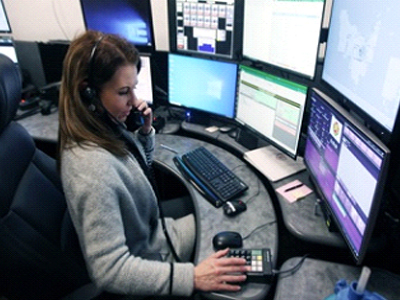 |
Initiating an Emergency Response |
0.50 |
This course describes a procedure for responding to the report of an emergency. This course will describe how to initiate an emergency response when receiving alarms via the firehouse non-emergency-phone, a walk up to quarters, and reporting an emergency that occurs in the firehouse. This course reviews the skills required to use equipment to receive, record, and transmit an incoming alarm. This course also includes several scenarios during which the student uses a simulated procedure to initiate a response to several types of reported emergencies. The clock time for this course is approximately one-half hours. |
 |
Social, Emotional, and Behavioral Supports for Paraprofessionals |
1.00 |
This course explores how to support students emotionally, socially, and behaviorally. It is important to understand the value of building rapport with students to promote resilience. Additionally, this course will explore the components of student behavior, how to identify the function of behavior, and how to create a supportive environment for students. This course will help you develop new knowledge about students and will help you understand what your role as a paraprofessional is. |
 |
Caidas en la Construccion (Spanish) Falls in Construction |
1.50 |
Este curso es en español. En este curso, usted verá videos sobre varios tipos de caídas que pueden ocurrir mientras se trabaja en la construcción. Usted aprenderá sobre aberturas en el suelo, andamios fijos, entabladas de puentes, reparación de techos, claraboyas, y trabajo en cornisa. |
 |
Grammar Skills: Word Choice |
1.00 |
This course covers how to choose the appropriate words for clear communication and how to recognize and use frequently misused words correctly. You will also learn how to avoid common spelling errors and correctly attach prefixes and suffixes to words. |
 |
Grammar Skills: Punctuation and Mechanics |
1.00 |
This course covers how to punctuate clauses in sentences by using commas, semicolons, colons, and dashes as well as how to set phrases apart by using parentheses and brackets; correctly use apostrophes and hyphens. You will also learn how to use quotation marks and end punctuation; identify when to spell out numbers, money, and dates as well how to correctly capitalize words in sentences. |
 |
Grammar Skills: Synonyms, Antonyms, and Homonyms |
0.25 |
This course covers how to differentiate between synonyms and antonyms. You will also learn how to use homonyms and recognize the differences between various homonyms. |
 |
Hazardous Materials |
0.50 |
This course covers the basics of how to work with hazardous materials. You will learn how to work with combustible, flammable, and explosive materials, as well as the safety and training that goes along with it. |
 |
The Stages of Escalation and How to Manage Them |
1.00 |
We know that the most effective learning is relationally based. The same is true when we intervene with students in crisis: the deeper we’ve established relationships with students, the more power we have to guide them to calm and safety. Crisis situations can leave a wake of difficult thoughts and feelings. Students and teachers can feel lingering shame, anger, fear and confusion for days—even weeks or months—after a traumatic event. The good news is that crisis situations do not have to be harmful to a relationship, and in fact, they can serve as a doorway to deeper trust, intimacy, and respect. |
 |
Fire Suppression Tactics |
1.00 |
No other tactic on the fireground has a higher potential for saving lives and protecting property than Fire Suppression. Suppression on the fireground can be deployed in multiple strategies and performed through a variety of methods. This course will discuss the application of suppression tactics and tasks while operating in different operational modes under strategies selected as a result of assessed risk. Application of these suppression tactics are matched with the appropriate strategy and task methods are introduced. Each type of suppression task method is described in detail along with a review of its specific strengths and weakness. |
 |
Incorporating Physical Activity Into Every Day (CDA 2) |
2.00 |
This course empowers childcare providers to overcome common challenges and integrate joyful physical activity into their daily routines. Discover practical, budget-friendly solutions to overcome barriers related to space, equipment, and even your expertise. Learn from a leading physical education expert and unlock a treasure trove of engaging activities that get kids moving, laughing, and learning. |
 |
Falls in Construction |
1.50 |
This course is in English. We also have a version of this course in Spanish. In this course, you will watch videos on various types of falls that can occur while working in construction. You will learn about floor openings, fixed scaffolds, bridge decking, reroofing, skylights, and leading-edge work. |
 |
Preventing Violence at the Workplace - Retail |
0.50 |
This course addresses workplace violence, including its factors and types, and provides strategies for preventing it. |
 |
CERT Firefighter Rehab Operations |
1.00 |
This course is designed to train Community Emergency Response Team (CERT) members to recognize signs of physiological distress in firefighters. It seeks to provide information on how to set up safely and perform non-medical functions of firefighter rehabilitation. You will specifically learn what to do at the incident scene, in the rehab area, and during the rehab process. |
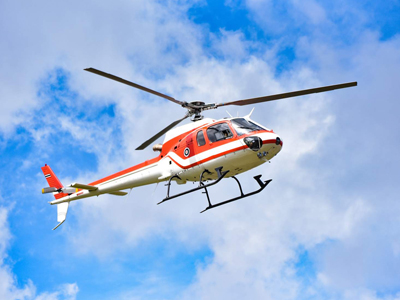 |
CERT Unit 7: Light Search & Rescue Operations |
1.00 |
This course covers how to operate in an effective manner for emergency response and rescue. You will learn how to size up the situation in which the search and rescue team will operate, as well as how to conduct search and rescue operations. Being able to use safe techniques for rescue gives a CERT volunteer a better chance to remove survivors from dangerous situations as well as prevent a CERT volunteer from putting themselves in danger. |
 |
Electrical Safety for the Non-Electrical Skilled Worker |
0.25 |
This course covers additional safety training for electrical hazards that non-electrical skilled workers are exposed to in the workplace. |
 |
High-Leverage Practices for Teachers |
1.25 |
Welcome to High-Leverage Practices for Teachers. This course covers the fundamental components of high-leverage practices and how to implement them in the classroom to support student success. |
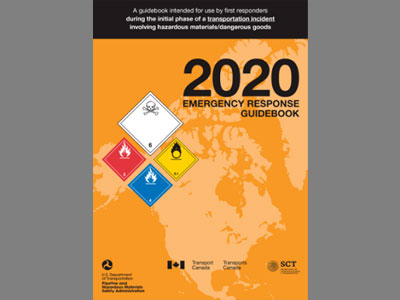 |
Emergency Response Guidebook Activity |
1.50 |
This course is an activity that requires the first responder to utilize the Emergency Response Guidebook to solve a variety of problems. The solution to each of these problems can be found using the 2020 Emergency Response Guidebook Version. Students will need to have a copy of the Emergency Response Guidebook Version 2020 to complete this activity. A 2020 Emergency Guidebook PDF is available for download in this lesson if a copy of the book is not available to the student.
It should be noted that this is an in-service training activity. The student must have prior knowledge and training regarding the Emergency Response Guidebook prior to engaging this activity.
|
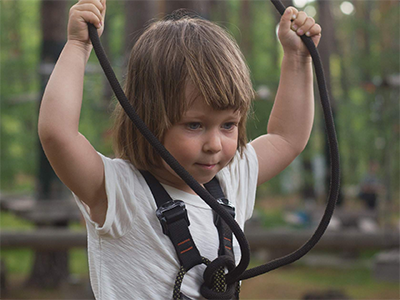 |
Assessing and Implementing a Safe Child Care Environment (CDA 1 & 5) |
2.00 |
Little explorers have big ambitions! As infants and toddlers embark on their journey of discovery, their safety becomes your top priority. This course equips you with the knowledge and tools to proactively create safe and stimulating environments. Learn to assess play spaces, evaluate activities, and refine existing practices, fostering a nurturing atmosphere where exploration and safety flourish hand-in-hand. |
 |
CERT Unit 1: Disaster Preparedness |
1.00 |
The Community Emergency Response Team (CERT) program educates volunteers about disaster preparedness for the hazards that may occur where they live. This course covers the functions of CERT and how CERT fits into your community's emergency preparedness structure. The types of hazards that can affect communities and the hazard's potential to impact people, health, and infrastructure are discussed in this course. In addition, this course also will teach you how to face a potential disaster.
It is just one of many health and safety courses we offer. This course will help you learn the best practices for keeping yourself safe and healthy when on the job. |


























